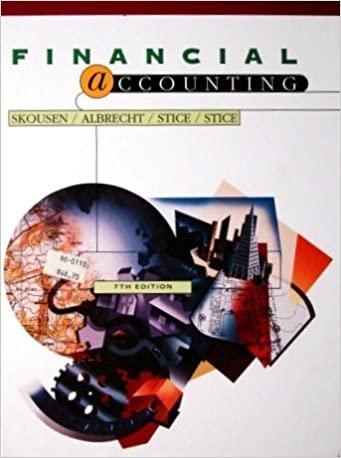Answered step by step
Verified Expert Solution
Question
1 Approved Answer
The following information relates to questions 6 - 1 1 The senior vice president of acquisitions for Northland Industries, Angela Lanton, and her head analyst,
The following information relates to questions
The senior vice president of acquisitions for Northland Industries, Angela Lanton, and her head analyst, Michael Powell, are evaluating several potential investments. Northland is a diversified holding company for numerous businesses. One of Northlands divisions is a manufacturer of fine papers, and that division has alerted Lanton about Oakstar Timber, a supplier that may be available for purchase. Oakstars sole owner, Felix Tanteromo, has expressed interest in exchanging his ownership of Oakstar for a combination of cash and Northland Industries securities
Oakstars main asset is hectares of timberland in western Canada. The land is a combination of new and old growth Douglas fir trees. The value of this timberland has been steadily increasing since Oakstar acquired it Oakstar manages the land on a sustained yield basis ie so it continues to produce timber indefinitely and contracts with outside forestry companies to evaluate, harvest, and sell the timber. Oakstars income is in the form of royalties fees paid to Oakstar based on the number of cubic meters harvested Oakstars balance sheet as of December X in Canadian dollars, is as follows.
In addition to the balance sheet, Powell is gathering other data to assist in valuing Oakstar and has found information on recent sales of timberland in western Canada. Douglas fir properties have averaged C$ per hectare for tracts that are not contiguous and do not have a developed road system for harvesting the timber. For tracts with these features, as possessed by Oakstar, the average price is C$ per hectare. Properties near urban areas and having potential for residential and recreational second home development command up to C$ per hectare. Oakstars land lacks this potential. Lanton believes these values would form the basis of an assetbased valuation for Oakstar, with the additional assumption that other assets and liabilities on the balance sheet are assumed to be worth their stated values.
The second company under evaluation, FAMCO, Inc., is a familyowned electronic manufacturing company with annual sales of US$ million. The family wants to monetize the value of its ownership in FAMCO with a view to later investing part of the proceeds in a diversified stock portfolio. Lanton has asked Powell to obtain data for both an incomebased and marketbased valuation.
Powell has obtained the recent annual income statement and additional data needed to calculate normalized earnings as follows.
Additional data for FAMCO is provided in the following table. Included are estimates by Powell of the compensation paid to family members and the smaller amount of salary expense for replacement employees if Northland acquires the company reflecting perceived abovemarket compensation of the family group executives He believes the current debt of FAMCO can be replaced with a more optimal level of debt at a lower interest rate. The additional data will be reflected in a normalized income statement.
Powell also recognizes that a value needs to be assigned to FAMCOs intangibles consisting of patents and other intangible assets. Powell prepares an additional estimate of excess earnings and intangibles value using the capitalized cash flow method. He projects the following data for X:
Lanton asks Powell to also use the market approach to valuation with a focus on the guideline transactions method. Powell prepares a table showing relevant information regarding three recent guideline transactions and market conditions at the time of the transactions. Powells assumptions about FAMCO include its expected fast growth and moderate level of risk.
Although Northland is interested in acquiring all of the stock of FAMCO, the acquisition of a equity interest in FAMCO is also an option. Lanton asks Powell about the valuation of small equity interests in private entities and notes that control and marketability are important factors that lead to adjustments in value estimates for small equity interests. Powell mentions that the control premium paid for the most similar guideline firm used in the analysis suggests a discount for lack of control of The discount for lack of marketability was estimated at
Step by Step Solution
There are 3 Steps involved in it
Step: 1

Get Instant Access to Expert-Tailored Solutions
See step-by-step solutions with expert insights and AI powered tools for academic success
Step: 2

Step: 3

Ace Your Homework with AI
Get the answers you need in no time with our AI-driven, step-by-step assistance
Get Started


